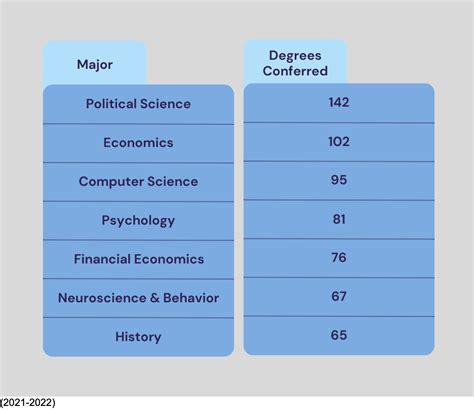Harlem Renaissance Musicians

The Harlem Renaissance, a cultural movement that flourished during the 1920s and 1930s, brought about a vibrant and transformative era in the realm of African American arts, literature, and music. This period, often referred to as the "New Negro Movement," witnessed an explosion of creativity and a celebration of Black identity and heritage. Music, in particular, played a pivotal role in shaping the cultural landscape of the time, with numerous talented musicians emerging from the vibrant streets of Harlem, New York.
The Rise of Jazz and Blues: A Musical Revolution

The Harlem Renaissance coincided with the birth and evolution of jazz and blues music, genres that would go on to define the American musical landscape for decades to come. These genres, with their unique blend of African rhythms, European harmonies, and American innovation, provided a powerful platform for African American artists to express their experiences, struggles, and aspirations.
One of the key figures of this musical revolution was Duke Ellington, a legendary jazz pianist and composer. Born in Washington, D.C., Ellington moved to Harlem in the early 1920s and quickly became a central figure in the jazz scene. His unique style, characterized by complex compositions and innovative arrangements, earned him the moniker "Duke," a title that reflected his regal presence and musical genius.
Ellington's orchestra, which included iconic musicians like Johnny Hodges on alto saxophone and Harry Carney on baritone saxophone, became a staple at the famous Cotton Club in Harlem. Their performances captivated audiences with their swinging rhythms and sophisticated melodies, setting the standard for jazz excellence.
| Genre | Musician | Notable Work |
|---|---|---|
| Jazz | Duke Ellington | "Take the 'A' Train" |
| Blues | Bessie Smith | "St. Louis Blues" |
| Jazz | Fats Waller | "Ain't Misbehavin" |

Another iconic figure of the Harlem Renaissance was Bessie Smith, often referred to as the "Empress of the Blues." Smith's powerful, soulful voice and emotive performances captivated audiences across the country. Her unique style, which blended traditional blues with elements of jazz, made her one of the most influential singers of her time. Smith's recording of "St. Louis Blues," written by W.C. Handy, is considered a masterpiece of the blues genre and has left an indelible mark on American music.
The King of Stride Piano: James P. Johnson
In the world of jazz piano, James P. Johnson stood out as a true pioneer. Known as the “Father of Stride Piano,” Johnson’s innovative playing style, characterized by complex left-hand patterns and improvisational right-hand melodies, defined the Harlem stride piano tradition. His influence extended beyond his contemporaries, shaping the playing styles of future jazz pianists.
Johnson's composition, "Carolina Shout," is a testament to his genius. This intricate piece, performed with incredible speed and dexterity, showcased Johnson's mastery of the piano and became a benchmark for jazz pianists to aspire to. His impact on the development of jazz as a genre cannot be overstated, as his innovative playing style laid the foundation for future generations of jazz musicians.
The Power of Jazz: Count Basie and His Orchestra
The Harlem Renaissance witnessed the emergence of numerous jazz orchestras, but one that stood out for its unique sound and influence was the Count Basie Orchestra. Led by the talented pianist and bandleader Count Basie, this orchestra became a powerhouse of swing and big band jazz. With a distinctive style characterized by a powerful rhythm section and a focus on improvisation, the Count Basie Orchestra left an indelible mark on the jazz world.
Basie's innovative use of a two-tenor saxophone arrangement, featuring the legendary Lester Young and Herschel Evans, added a unique depth and richness to the orchestra's sound. The orchestra's repertoire, which included classics like "One O'Clock Jump" and "Jumpin' at the Woodside," became staples of the swing era and continue to be celebrated as some of the greatest jazz compositions of all time.
A Legend in Their Own Right: Thelonious Monk
As the Harlem Renaissance evolved, a new generation of jazz musicians emerged, pushing the boundaries of the genre even further. One such musician was Thelonious Monk, a pianist and composer whose unique style and unorthodox approach to harmony and rhythm earned him a reputation as one of the most influential jazz musicians of the 20th century.
Monk's compositions, such as "Round Midnight" and "Misterioso," challenged traditional jazz conventions with their complex harmonies and unconventional rhythms. His playing style, characterized by a percussive attack and a unique sense of timing, influenced countless jazz pianists who followed in his footsteps. Monk's impact on jazz is undeniable, as his innovative approach paved the way for the development of modern jazz and continues to inspire musicians to this day.
The Legacy Continues: Influence and Impact

The musicians of the Harlem Renaissance left an enduring legacy, not only in the realm of music but also in shaping the cultural identity of African Americans. Their contributions extended beyond their art, influencing social and political movements and inspiring future generations of artists.
The music of the Harlem Renaissance, with its unique blend of blues, jazz, and spirituals, became a powerful tool for expression and empowerment. It provided a voice for the African American community, celebrating their heritage and challenging racial stereotypes. The success and popularity of these musicians also played a significant role in the growing acceptance and integration of African American culture into the mainstream.
The influence of the Harlem Renaissance musicians can be seen in the continued evolution of jazz and blues, as well as in the development of other genres such as rhythm and blues, soul, and hip-hop. Their innovative approaches to music and their fearless expression of identity continue to inspire and shape the musical landscape to this day.
Preserving the Past, Inspiring the Future
Efforts to preserve and celebrate the music of the Harlem Renaissance are ongoing. Many of the iconic venues and clubs where these musicians performed have been restored or memorialized, serving as reminders of the rich cultural heritage of Harlem. Additionally, numerous musical tributes, documentaries, and educational programs have been created to ensure that the stories and music of these legendary artists are passed down to future generations.
The impact of the Harlem Renaissance musicians extends far beyond the boundaries of music. Their resilience, creativity, and talent served as a beacon of hope and inspiration for African Americans and people from all walks of life. The cultural and social impact of their music continues to be felt, as it inspires conversations about race, identity, and the power of art to bring about positive change.
What was the significance of the Harlem Renaissance in the development of jazz and blues music?
+The Harlem Renaissance provided a fertile ground for the growth and evolution of jazz and blues music. It served as a cultural hub, bringing together talented musicians who were free to experiment and innovate. The unique blend of African and European musical influences, combined with the vibrant energy of Harlem, fostered an environment where these genres could thrive and develop into the powerful art forms we know today.
How did the musicians of the Harlem Renaissance challenge societal norms and stereotypes?
+Through their music, the Harlem Renaissance musicians challenged societal norms and stereotypes by presenting a powerful and positive image of African American culture. Their performances and recordings showcased the richness and diversity of Black musical traditions, countering the negative stereotypes and misconceptions that were prevalent at the time. By celebrating their heritage and expressing their experiences through music, they helped to reshape societal perceptions and promote a more inclusive and understanding society.
What are some of the lasting contributions of the Harlem Renaissance musicians to the world of music?
+The musicians of the Harlem Renaissance left an indelible mark on the world of music with their innovative styles, compositions, and performances. They pushed the boundaries of jazz and blues, introducing new techniques, harmonies, and rhythms that continue to influence musicians today. Their contributions helped shape the course of American music, paving the way for future genres and inspiring countless artists who followed in their footsteps.



